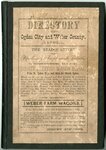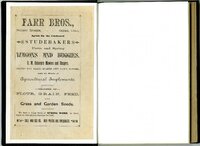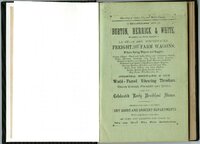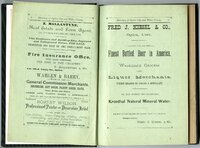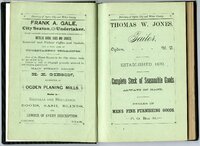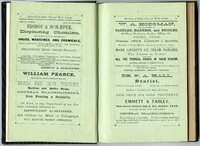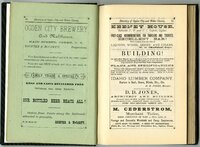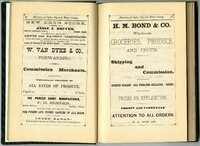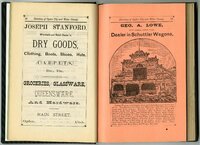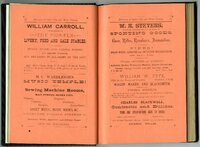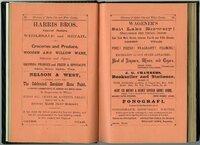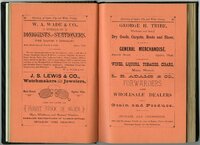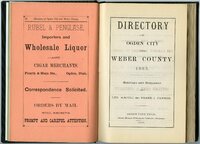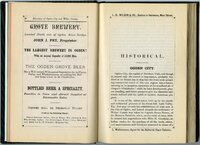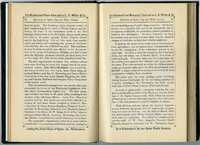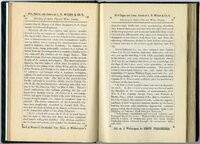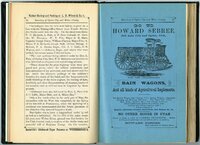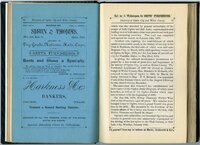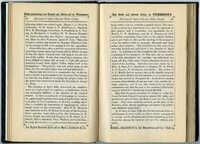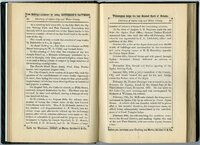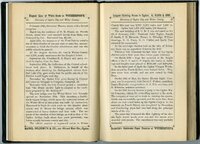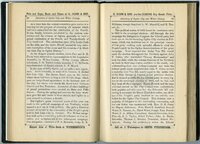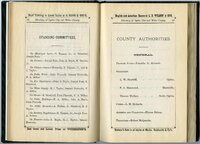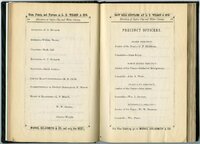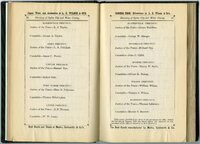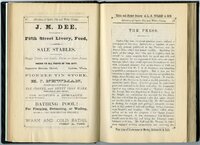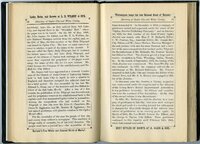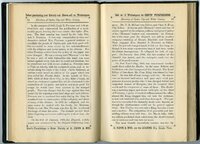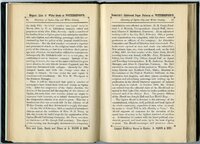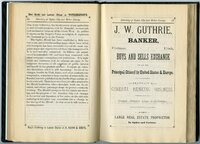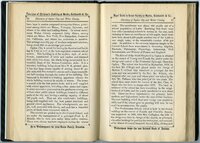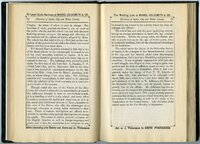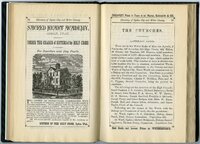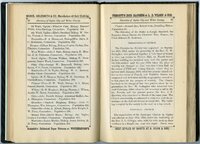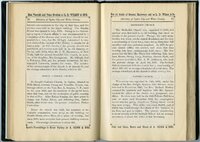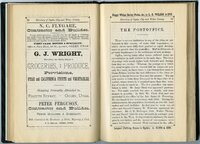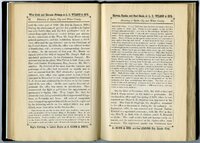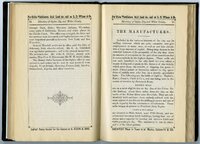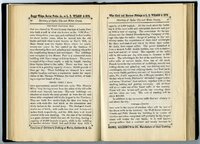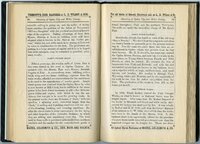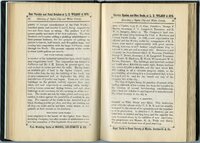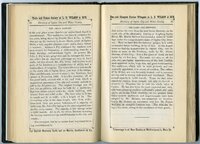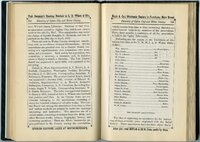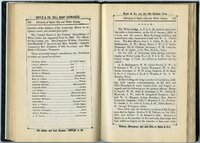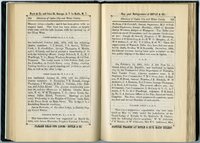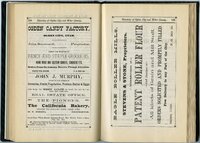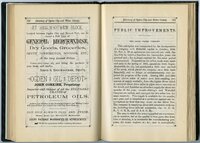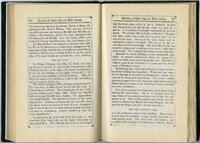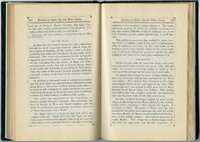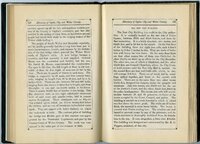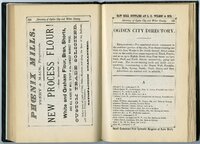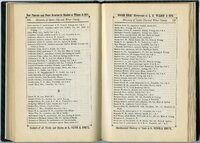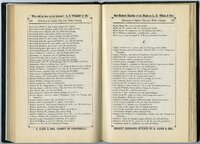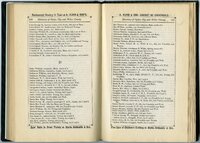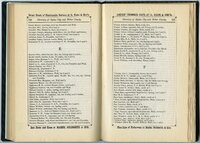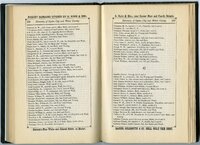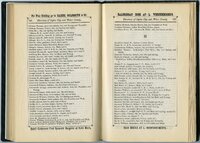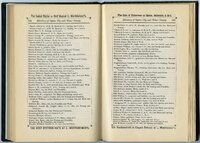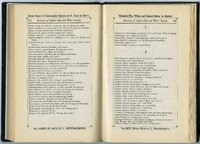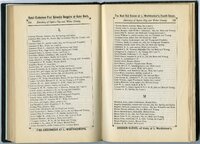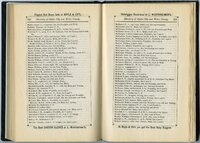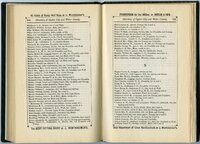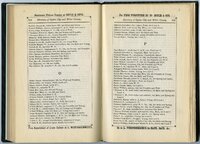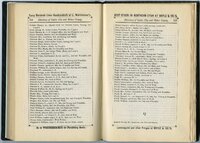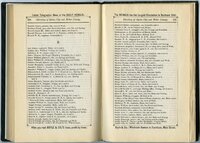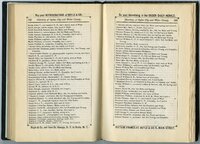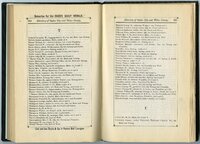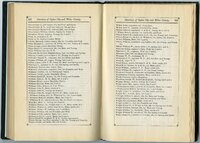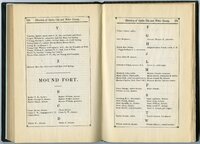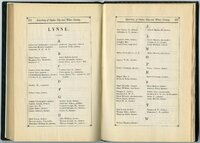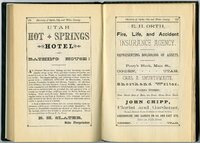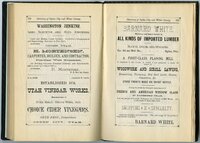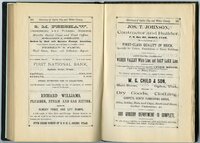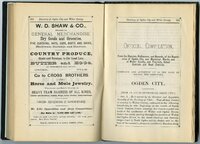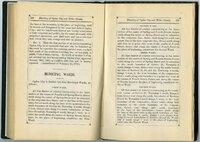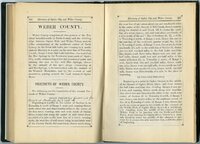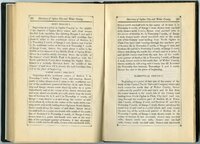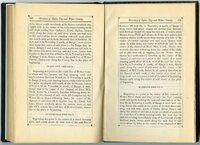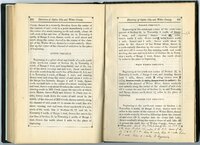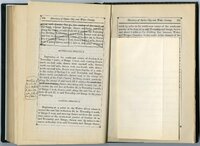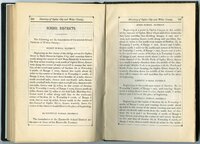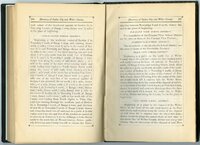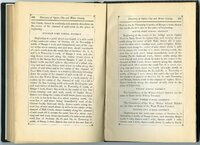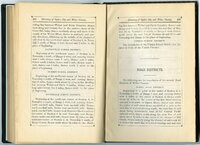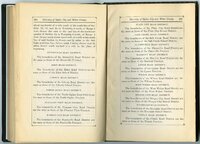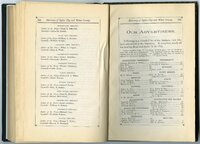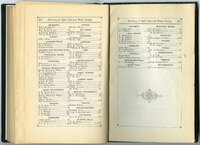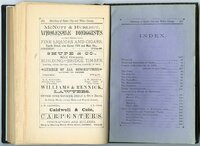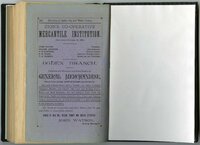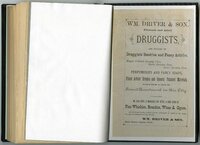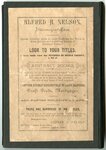| Title |
1883 Directory of Ogden City and Weber County |
| Description |
The Polk Directories contain business and residential addresses and phone numbers for the Ogden Area from 1870 to the present. |
| Biographical/Historical Note |
The city directory will contain an alphabetical list of citizens, listing the names of the heads of households, their addresses, and occupational information. Sometimes a wife's name will be listed in parentheses or italics following the husband's. Other helpful information might include death dates for individuals who had been listed in the previous year's directory, names of partners in firms, and forwarding addresses or post offices for people who had moved to another town. |
| Subject |
Directories; Business; Ogden (Utah) |
| Digital Publisher |
Stewart Library, Weber State University |
| Date Original |
1883 |
| Date |
1883 |
| Date Digital |
2016 |
| Temporal Coverage |
1870; 1871; 1872; 1873; 1874; 1875; 1876; 1877; 1878; 1879; 1880; 1881; 1882; 1883; 1884; 1885; 1886; 1887; 1888; 1889; 1890; 1891; 1892; 1893; 1894; 1895; 1896; 1897; 1898; 1899; 1900; 1901; 1902; 1903; 1904; 1905; 1906; 1907; 1908; 1909; 1910; 1911; 1912; 1913; 1914; 1915; 1916; 1917; 1918; 1919; 1920; 1921; 1922; 1923; 1924; 1925; 1926; 1927; 1928; 1929; 1930; 1931; 1932; 1933; 1934; 1935; 1936; 1937; 1938; 1939; 1940; 1941; 1942; 1943; 1944; 1945; 1946; 1947; 1948; 1949; 1950; 1951; 1952; 1953; 1954; 1955; 1956; 1957; 1958; 1959; 1960; 1961; 1962; 1963; 1964; 1965; 1966; 1967; 1968; 1969; 1970; 1971; 1972; 1973; 1974; 1975; 1976; 1977; 1978; 1979; 1980; 1981; 1982; 1983; 1984; 1985; 1986; 1987; 1988; 1989; 1990; 1991; 1992; 1993; 1994; 1995; 1996; 1997; 1998; 1999; 2000; 2001; 2002; 2003; 2004; 2005; 2006; 2007; 2008; 2009; 2010; 2011; 2012; 2013; 2014; 2015; 2016; 2017; 2018; 2019; 2020; 2021; 2022 |
| Item Size |
8.5 x 5.75 x .5 inch |
| Item Description |
214 page hard bound book. The cover has brown paper on it covered in black type. |
| Conservation Notes |
The item has been rebound with the original cover glued on the front. |
| Spatial Coverage |
Ogden, Weber County, Utah, United States, http://sws.geonames.org/11788968/ |
| Type |
Text |
| Format |
application/pdf |
| Conversion Specifications |
TIFF images were scanned with an Epson Expression 100000XL scanner. OCR using ABBYY Reader. JPG and PDF files were then created for general use. |
| Language |
eng |
| Rights |
Public Domain. Courtesy of Special Collections, Stewart Library, Weber State University. |
| Source |
Special Collections, Weber State University Stewart Library |
| ARK |
ark:/87278/s6qbzv9t |
| Setname |
wsu_wcpd |
| ID |
100162 |
| Reference URL |
https://digital.weber.edu/ark:/87278/s6qbzv9t |

